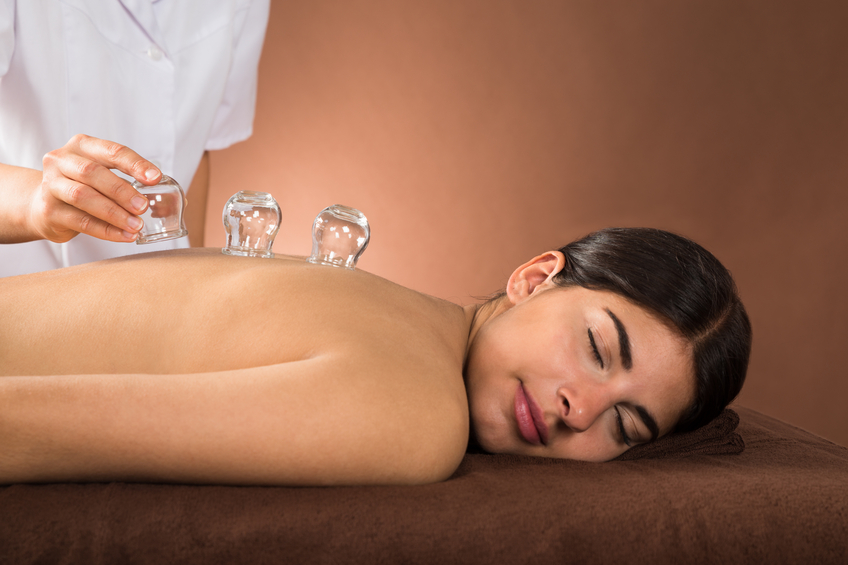What is Cupping and How Does it Work?
Cupping therapy is an ancient healing modality. Evidence of cupping can be found in almost all ancient cultures from all parts of the world. Alongside acupuncture cupping is also an integral part of Chinese medicine. Acupuncturists will often use cupping, as needed, along with acupuncture during a treatment session.
The core principal in all types of cupping is creating suction. Suction pulls the skin into the cup; negative pressure is therefore created in the local area. This flushes out toxins and brings fresh blood supply to the affected area both of which facilitate healing. The marks are primarily due to local extravasation and bad, toxic, stagnant qi being pulled out. These marks fade in a few days, but may take longer for some people. Unlike a bruise these marks are not painful as they are not caused by ruptured capillaries. The darkness of the mark increases with the level of stagnation in the area being cupped and the bad qi or “sha” being pulled out. In rare cases of severe pain (blood stasis) particularly near joints blisters may sometimes form as a result of cupping. These are punctured with a sterile needle and the result is a dramatic reduction in pain.
There are different kinds of cupping. Fire cupping uses glass cups and a small flame to create suction while vacuum cupping uses glass or plastic cups and a hand held pump to create suction. Silicone cups are flexible and suction is created mechanically. Silicone cups work well on contoured surfaces. Cupping may be static (cups are left in one place) or dynamic in which cups are gently moved over the affected area. Wet cupping involves removal of fluids usually blood (or occasionally pus) and may be used in cases of severe stagnation.
Cupping is most commonly used for pain relief whether acute or chronic, muscular or effecting the joints, but it has many other therapeutic uses. In case of athletes, particularly swimmers or endurance runners, detoxification is a major benefit of cupping besides relieving pain and stiffness. Cupping may also be used for more internal and chronic issues like digestive problems, particularly constipation. The respiratory system also responds well to cupping making it a good option for relieving chest congestion or helping with labored breathing. Cupping can soften scar tissue, reduce cellulite and restore integrity to fascia that needs strengthening or restructuring. Cupping also helps with menstrual cramps, fibromyalgia, fatigue, circulatory problems, edema, and promotes better lymphatic drainage.
Unlike massage therapy cupping doesn’t use compression. Some of the mechanisms by which cupping works are:
-
-
- Flushing out of toxins from the tissue
- Facilitating lymphatic drainage
- Improving blood circulation and nutrition supply to the tissue
- Reducing stagnation of qi and blood
- Increasing metabolic activity in the skin
- Increasing cutaneous respiration
- Reducing congestion in the joints
- Facilitating peristalsis
-
The beneficial effects of cupping are numerous. As with any manual therapy usually a series of treatments are needed for resolution of chronic issues and there are certain contraindications. Come get some acupuncture and ask us if cupping is right for you!



